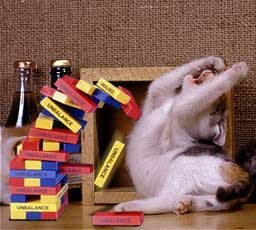Monday, December 31, 2007
Our Earth as Art
Images of the earth through the eyes of the Landsat-7 satellite! This image shows Ubari and Murzuq sand dune seas in the Fezzan region of southwestern Libya, close to the border with Algeria. Though the above image may resemble a new age painting straight out of an art gallery in Venice Beach, California, it is in fact a satellite image of the sands and seaweed in the Bahamas. The image was taken by the Enhanced Thematic Mapper plus (ETM+) instrument aboard the Landsat 7 satellite. Tides and ocean currents in the Bahamas sculpted the sand and seaweed beds into these multicolored, fluted patterns in much the same way that winds sculpted the vast sand dunes in the Sahara Desert. Massive sand dunes have been swept around and between rock outcroppings in the barren Libyan Desert. Only a handful of oases lie scattered across this especially arid section of the vast Sahara Desert. Andes -- Vivid colors belie the arid landscape of northern Chile where the Atacama Desert, one of the world's driest, meets the foothills of the Andes. Here salt pans and gorges choked with mineral-streaked sediments give way to white-capped volcanoes. The Lena River, some 2,800 miles (4,400 km) long, is one of the largest rivers in the world. The Lena Delta Reserve is the most extensive protected wilderness area in Russia. It is an important refuge and breeding grounds for many species of Siberian wildlife. The Turpan Depression, nestled at the foot of China's Bogda Mountains, is a strange mix of salt lakes and sand dunes, and is one of the few places in the world that lies below sea level. As air flows over and around objects in its path, spiraling eddies, known as Von Karman vortices, may form. The vortices in this image were created when prevailing winds sweeping east across the northern Pacific Ocean encountered Alaska's Aleutian Islands |
Sunday, December 30, 2007
Bringing Death to Life
The exhibit, titled Body Worlds, shows visitors something that most have never seen up close – the inside of the human body. No longer limited to the medical community, the human anatomy is revealed in all of its natural beauty and mystery.
source: Therapy Times |
About the Body Worlds Exhibit
Dead bodies are storming major cities throughout the United States, and will be showcased at a museum near you. No, this is not the ploy of a major movie studio, in hopes of promoting the latest horror flick. These bodies are the brainchildren of German physician Gunther von Hagens, MD – a pioneer in the field of whole-body preservation. The process by which organs, tissues and entire bodies are preserved is called "plastination." Invented by von Hagens in 1978 at the Institute for Anatomy at Heidelberg University in Germany, plastination is a preservation technique that has gained general acceptance and is currently being used at various institutions around the world. This technique allows specimens to be preserved in a durable and realistic state. And by replacing bodily fluids and fat with a polymer substance and then curing it with gas, light or heat, von Hagens found a method of preservation that stops decay and composition. Moreover, all of the plastinates on display at Body Worlds are authentic. Through a donation program – similar to organ donation – people can make their bodies available for plastination after their deaths. The reasons people donate their bodies to the program vary; however, most say it's because they want to help others, including the medical community and laypersons, learn about their own bodies. One donor commented, "I am particularly interested in having my body used to educate the general public. Sadly, many of us know more about our cars than our bodies. By expanding our knowledge of our body, we can lead healthier lives." Before signing over their bodies in a declaration of intent, donors are provided with detailed information. The plastinates on display do not reveal the donor's identity. Every year, von Hagens meets with the donors in Heidelberg and gets their feedback about Body Worlds and the plastination phenomenon. And while some may be repulsed by the idea of donating their body to be on public display, others embrace it as an altruistic opportunity or a purpose for their life.
source: Therapy Times |
Saturday, December 29, 2007
Old Typewriters Get an Extreme Makeover
These sculptures by Jeremy Mayer are made from bits and pieces from old typewriters! What is even more interesting is that he assembled them without any gluing, welding or soldering - it’s all cold assembly. |
Labels: art, interesting













